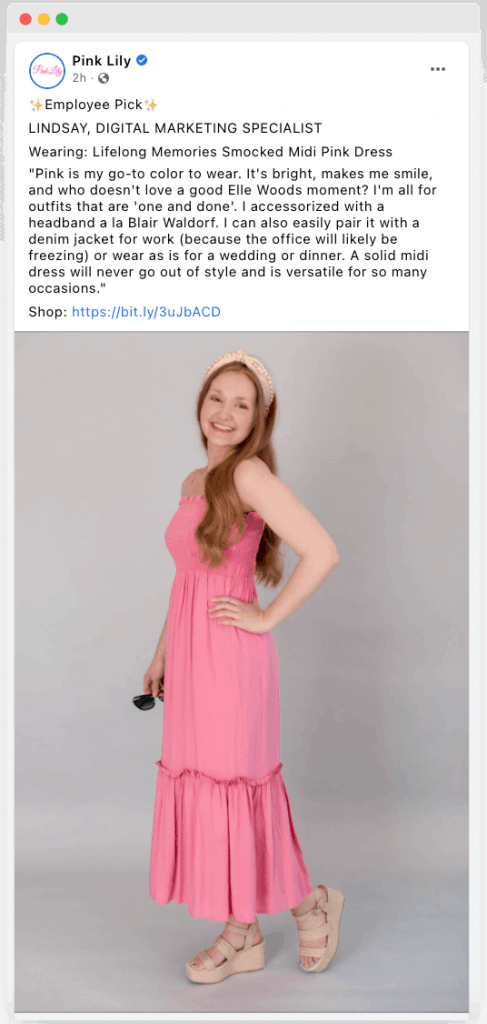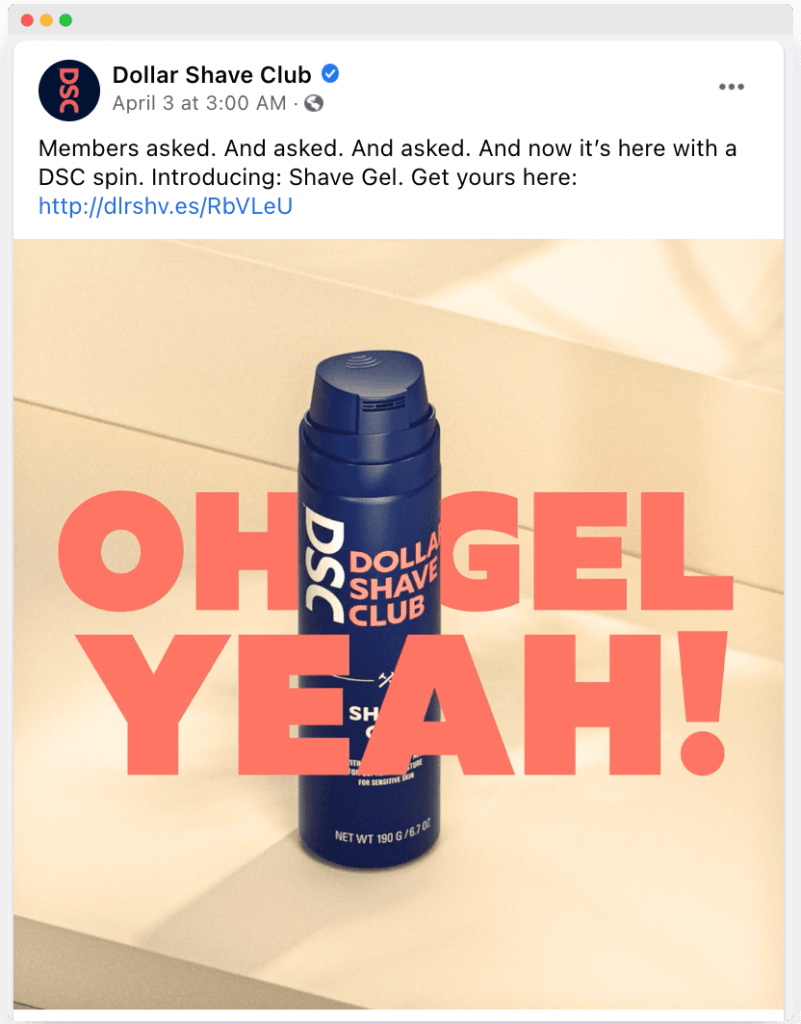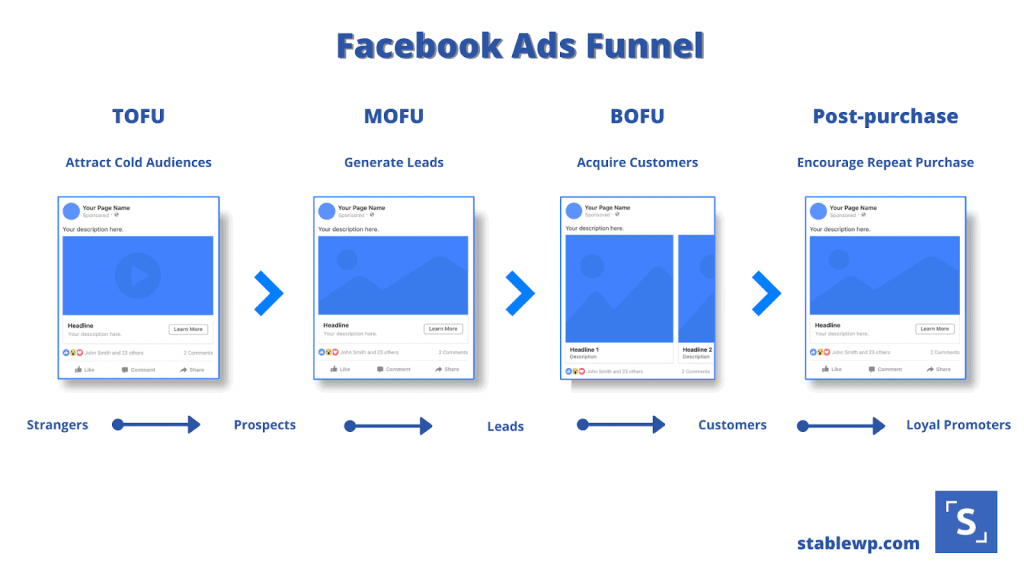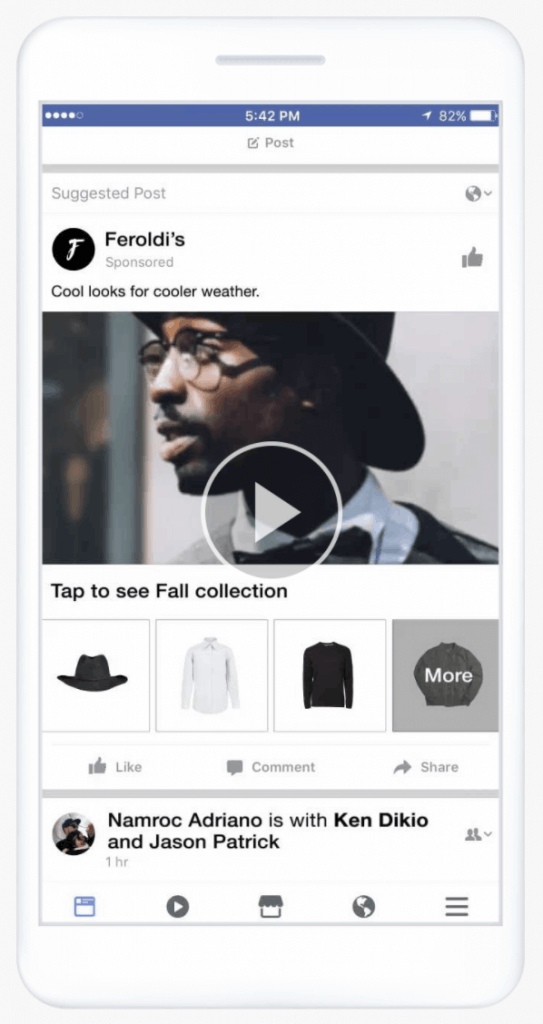Facebook’s goal has always been to connect business owners and their customers. If you’re in the ecommerce industry and wondering if Facebook can help, the answer is a resounding yes.
It doesn’t matter what you’re selling (apparel, food, beauty products, etc.) – tons of Facebook ecommerce solutions will propel your business forward.
This is especially important now that a lot of local retail stores struggle to stay relevant due to the recent pandemic. And because of that, owners have considered moving their small businesses to ecommerce. 🛒
Keep reading, because, in this guide, we’re going to show you how to market your ecommerce brand on Facebook for free and use its advertising platform.
Interesting Facebook Stats for Your Ecommerce Business
Not quite sure yet how Facebook can help? Check out these interesting numbers.
- When it comes to the frequency of Facebook usage, 73% of US users log in daily. (Source: Statista)
- 78% of millennial US consumers have discovered retail products they were interested in via Facebook. (Source: Statista)
- Over 200 million small businesses use Facebook’s free tools to reach consumers. (Source: Facebook)
- ⅔ of Facebook users from around the world visit pages of local businesses at least once a week. (Source: Facebook)
- 10 million advertisers now use Facebook to sell their products and services, up from 7 million in 2019. (Source: Statista)
There’s no doubt that your customers are on Facebook – and so are other businesses. By following the strategies below, you’ll go a long way in reaching your goals.
Facebook Ecommerce Marketing Tips
1. Set up a Facebook business page.
If you haven’t set up a page on Facebook yet, make sure you do. The process is easy. Head over here facebook.com/pages/create. Add your ecommerce business name, description, profile photo, and complete the rest of your page details.
Once you’re done, start inviting people to like your page. In fact, you can start running ads to increase brand awareness and connect with potential customers. (Scroll down to the section “Facebook Ads for Ecommerce Marketers” for more ad tips.)
Create organic Facebook posts to stay relevant to your audience whether or not you’re running ads. Doing this will also keep your page fresh!
2. Create a Facebook shop.
Facebook launched Facebook Shops in May 2020 to make it easy for small businesses to sell products right from their page. See the announcement here.
In a nutshell, Facebook Shops lets you create a shop for free. With that, you get to feature your product collections and customize your shop with your brand colors.
Here’s a great Facebook shop example:
Ink Meets Paper, a small printing company, uses Facebook Shops and shared how this new feature helped them connect with customers not just on FB, but also on Instagram.
“They can see the product that they like, they can touch that product, and add it to their bag. It really is a true shopping experience,” said Jamie, one of the owners.
Check out the video:
Setting up your Shop should be done within Facebook Commerce Manager. Then start creating your collection. There are plenty of e-commerce website builders available!
3. Entice your audience with great visuals.
It’s no secret that visuals improve your ecommerce audience’s experiences. Stats show that Facebook posts with images garner 2.3 times more engagement than those without images.
So, whether you’re sharing an educational blog post, making an announcement, or showcasing a product, accompany it with a relevant and enticing image.
To make their post engaging, ecommerce fashion brand The Pink Lily Boutique creates an “employee pick” post with a picture of their employee wearing their midi pink dress.

Instead of posting a plain photo of the dress, Pink Lily did it better by using a photo of an actual person.
4. Upload videos of your products.
Take it a step further by creating videos in addition to photos. Videos are especially useful for demonstrating how to use your products, showcasing a new product in action, or telling stories.
A brand may also shoot a “message from the CEO” video to build deeper connections with their audience. In addition, consider testimonial videos to boost your social proof.
💡Bonus tip: Go live on Facebook! Doing this humanizes your ecommerce business even more. Facebook Live is free, easy to use, and generates real-time engagement.
5. Post during the best times and consistently.
Successful Facebook ecommerce marketing isn’t just about creating compelling and visually engaging posts. It’s also about knowing when and how often to post.
This takes us to the question: What’s the best time to post on Facebook for maximum brand exposure?
Different sources mention different times. For example, a Buffer study found 1-3 pm on weekdays and Saturdays as the best times. But for CoSchedule, it’s 1-4 pm late into the week and on weekends.
You can use this information as a starting point and test it out.
More importantly, see what your own data on Facebook Insights tells you. You’ll want to check when your fans are online including the reach and engagement of your published posts.
Are more people interacting with posts that were live during certain hours? Note that these posts have to be organic – not boosted posts.

Consistency is also key. This means that after you identify your best possible posting schedule, stick to it. This way, people know that you’ll be posting on certain days and times and will keep on visiting your page for new content.
6. Add CTAs to every post.
If you’d like to accomplish something through your Facebook post, such as getting people to signup, read your content, buy your product, etc. – make sure you add a call-to-action (CTA).
Check out Dollar Shave Club’s Facebook post below. They introduced their new product which was a shave gel and wrote the call-to-action: “Get yours here”.

Facebook Ads for Ecommerce Marketers
An important part of your Facebook ecommerce strategy is advertising. Facebook ads will give you more opportunities to reach your exact audience while increasing your revenue. Here are five strategies that will work well for your ecommerce business.
1. Install the Facebook pixel.
The first thing you should do is to add the Facebook pixel to your ecommerce website. This piece of code will track the actions that visitors perform on your site – for example, newsletter signups or purchases.
With the data collected by the FB pixel, you’ll be able to create the following audiences:
- A custom audience that you’d like to show specific ads to.
- Lookalike audience that’s similar to your best customers.
(Note: Apple’s iOS14 update will limit data collection for iOS device users that opt out of tracking. Read more about it here.)
2. Plan your Facebook ads funnel.
What’s great about Facebook ads is that you can use them to get results for any stage of your marketing funnel.

As you can see, every Facebook ad campaign starts with you choosing an objective depending on the funnel stage – Awareness, Consideration, and Conversion.
To increase the success of your ads, you need to have a proper Facebook ad sales funnel. This entails creating campaigns for every stage of the funnel that target the right audience.

Image credit: Stablewp.com
For example, your top-of-the-funnel (TOFU) ads could be free guides that educate and help solve your target audience’s problem. Your bottom-of-the-funnel (BOFU) ads, on the other hand, can feature your products or customer case studies.
3. Improve your targeting.
You’ll get much better results from your Facebook ads by simply optimizing your targeting. There is no use sending a well-crafted message to the wrong audience – they still won’t click or convert.
Before choosing from the targeting options inside Ads Manager, you must already have a good grasp of who your ideal buyers are. This will be the basis of your Facebook ad targeting.
How would you describe them? Here are ways to collect their information:
- Use Audience Insights to understand the people connected to your Facebook page and everyone who’s on Facebook. You can see information such as their age, gender, location, things they care about, etc.
- Add more fields to your email signup form on your website. For example, if you’re offering a free workbook, instead of just asking their name and email – also ask about their location/hobbies/etc. Mark these fields as required.
- Run surveys. You can feature a simple poll on your website home page or do a post-purchase survey. Incorporating a survey in a contest/giveaway in exchange for extra points is also a great idea. Some of our successful users do this at UpViral like David Fraser of Bunkie Life.
>>Read more about ad targeting: Ways To Target People On Facebook
4. Use the Carousel and Collection formats for multiple products.
The Carousel format and Collection format are two ad types that effectively promote your ecommerce products.
Carousel format:

Image credit: FACEBOOK for Business
The Carousel format lets you show up to 10 images or videos of your product in a single ad. Each featured image/video will have its own link. This format makes it easier for people to shop.
See OFFICE’s Facebook ad in the screenshot above. This UK-based fashion footwear retailer specifically used the carousel format to encourage engagement.
Collection format:

Image credit: FACEBOOK for Business
The Collection ad format looks similar to a carousel ad. You can also display many images at once. Currently, there are 4 templates to choose from: Instant Storefront, Instant Lookbook, Instant Customer Acquisition, and Instant Storytelling depending on your goals.
The example above uses the Instant Lookbook format.
5. Show more social proof.
Using social proof in your Facebook ad can positively affect your audience’s buying decision. As a customer, you’re more likely to shop at an ecommerce store with customer reviews than a store without one.
Instead of the usual text for your ad copy, this time, quote a customer testimonial. Or you can also add it as an image text.
💡Bonus tip: Got several testimonials already? Showcase the best ones in a Facebook carousel ad!
Final Thoughts
Facebook is one of the best places to promote your business – especially Facebook ads.
Of course, you should always post organically whether you’re running ads or not to increase your business exposure. In fact, you can maximize your best-performing ecommerce page posts by turning them into ads using ConnectAutomate.
Or… check out other solutions at Connectio to improve and automate your Facebook ecommerce ad campaigns.
What are your thoughts on this topic? Have you considered using Facebook to reach your goals? It can take time to learn and master Facebook ads, but it’ll be worth it. We’re here to help.

